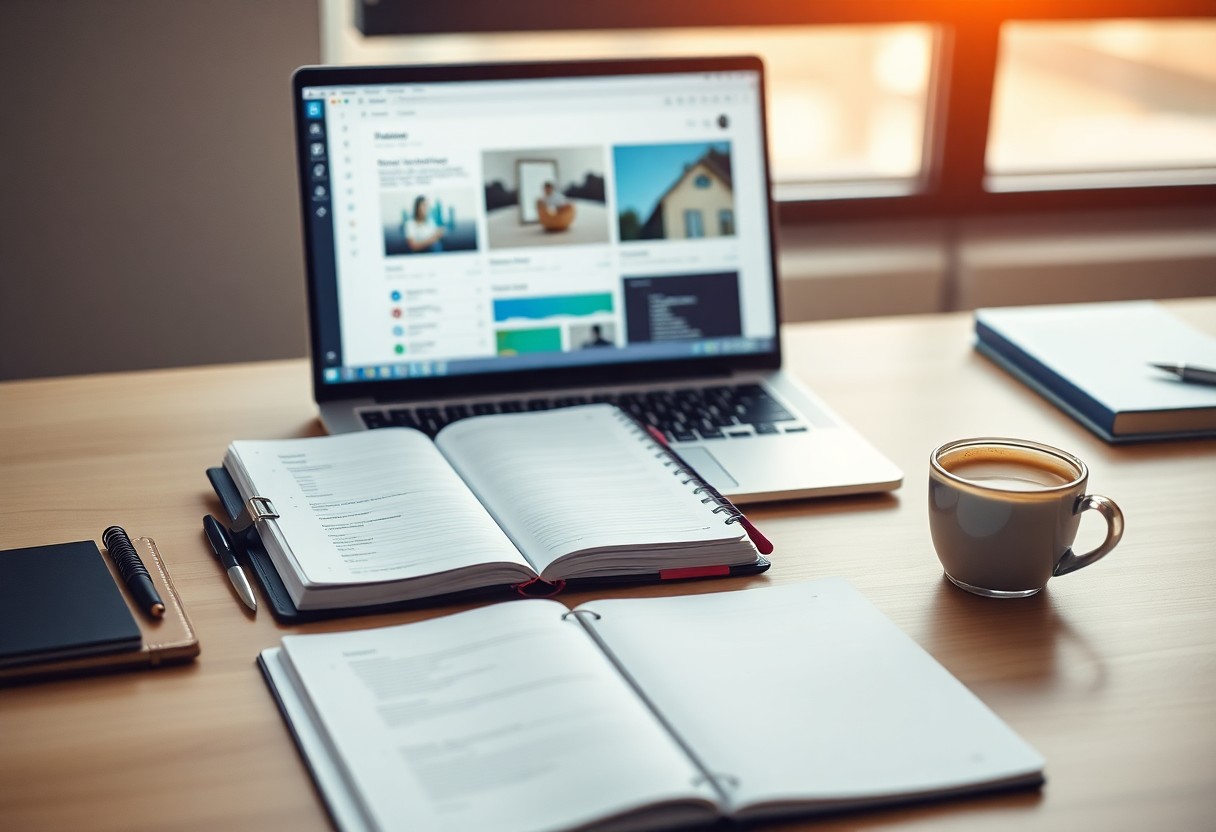Methods to overcome procrastination and boost your productivity are imperative for achieving your goals and maximizing your potential. You may often find yourself delaying important tasks, but with the right strategies, you can shift your habits. This blog post will guide you through various effective techniques that help you take control of your time, enhance your focus, and ultimately become more productive. Start implementing these methods today, and take the first step towards a more organized and efficient you.
Understanding Procrastination
Before you can tackle procrastination effectively, it’s imperative to understand what it truly is and why it happens. Procrastination is often mistaken for mere laziness, but in reality, it stems from a complex interplay of emotions, fears, and external factors that can impede your ability to get tasks done. Recognizing that procrastination isn’t solely a character flaw, but often a coping mechanism for anxiety, perfectionism, or fear of failure, can be the first step in overcoming it. This understanding allows you to approach your procrastination with a mindset geared towards problem-solving rather than self-judgment.
The Psychology Behind Procrastination
With every task you postpone, there lies an underlying psychological factor. Your brain often favors instant gratification, which can lead you to put off challenging tasks that may require sustained effort and focus. This tendency often coexists with feelings of overwhelm, where the anticipation of a difficult undertaking causes you to seek distraction as a means of emotional relief. By recognizing these psychological patterns, you can begin to reframe your mindset and develop strategies that allow you to manage these emotional responses more effectively.
Common Triggers and Their Impact
Common triggers for procrastination include fear of failure, perfectionism, and a lack of motivation. These triggers can lead you to avoid starting or completing tasks, ultimately affecting your productivity and mental well-being. Each time you give in to procrastination, you reinforce these cycles, which can diminish your self-esteem and heighten anxiety. Understanding these triggers is vital, as it highlights areas for personal growth and provides insights into how your emotional state can influence your behavior.
The interplay of various triggers can create a snowball effect, making it increasingly difficult to stay on track. For instance, if you associate a task with fear of poor performance, you may automatically delay it, leading to accumulated stress and guilt. This compounded effect can create a loop that undermines your productivity; the more you put it off, the heavier the weight of that task feels. By recognizing these triggers and their emotional impact, you empower yourself to take proactive steps towards overcoming procrastination.
Practical Methods to Combat Procrastination
Now that you’ve identified procrastination as a setback, it’s important to explore practical methods to combat it. One of the most effective ways to increase productivity is by adopting time management techniques that suit your lifestyle. By organizing your time more effectively, you can allocate specific periods for tasks, thus reducing the temptation to postpone them. Implement strategies such as the Pomodoro Technique, where you work for 25 minutes straight followed by a 5-minute break, or use time blocking to reserve distinct hours in your calendar dedicated to focused work. This structured approach creates a sense of urgency and helps in maintaining concentration on the task at hand.
Time Management Techniques
Practical time management techniques can greatly impact your ability to follow through on tasks you’ve been putting off. Set clear priorities by creating a daily to-do list that outlines what you need to accomplish in order of importance. Utilizing digital tools and apps can further enhance your time management efforts, allowing you to set reminders and track your progress. By dividing your workload into manageable chunks, you create a more approachable and less overwhelming path forward, which naturally leads to increased productivity and less procrastination.
The Power of Goal Setting
With clear goals in place, you can better focus your efforts and track your progress. Establishing SMART goals (Specific, Measurable, Achievable, Relevant, and Time-bound) creates an actionable roadmap that spurs you into action. By formalizing your aspirations, you engage both your motivation and a sense of accountability toward achieving those aims. Regularly reviewing and adjusting your goals also ensures that they remain relevant and inspiring, ultimately guiding you back on track when procrastination tries to take hold.
Due to the nature of setting specific and achievable goals, you can create a measurable framework within which you can operate. This not only illuminates the steps required to accomplish tasks but also breaks them down into smaller, more manageable parts. Celebrating small victories along the way can enhance your motivation, making it easier to stay focused and productive. By mastering goal setting, you also gain the clarity needed to streamline your efforts and reduce the likelihood of procrastinating on important tasks.
Building Accountability and Motivation
The journey to becoming more productive often involves establishing accountability and motivation. When you hold yourself accountable, you create an environment that encourages focus and commitment to your tasks. This can lead to a significant boost in your productivity levels, as you learn to push through distractions and stay on track. Incorporating methods that enhance accountability will not only keep you motivated but also allow you to track your progress and celebrate your successes, big or small.
Finding an Accountability Partner
Above all, finding an accountability partner can be a game-changer in your quest to improve productivity. This person can be a friend, colleague, or even a family member who shares your goals or understands your desire to be more productive. Regular check-ins, whether through phone calls, video chats, or face-to-face meetings, can foster a sense of responsibility. As you share your objectives and progress, your accountability partner will provide support, encouragement, and constructive feedback, making it much easier for you to stay on course.
Utilizing Productivity Tools
Productivity tools are designed to streamline your tasks and help you manage your time effectively. Whether it’s a digital planner, task management software, or simple to-do lists, these tools can significantly enhance your workflow. By integrating them into your daily routine, you will have a clearer overview of your responsibilities and deadlines, which can lessen the likelihood of procrastination. When you can visualize your tasks, you are more likely to prioritize effectively and allocate your time in a way that aligns with your goals.
With the array of productivity tools available today, you can find options tailored to suit your personal preferences and work style. For instance, apps like Trello or Asana help you organize tasks into manageable boards, while time-tracking tools like Toggl allow you to monitor how much time you spend on specific activities. By experimenting with various productivity tools, you can discover what resonates best with you, ultimately driving your productivity and helping to reduce the urge to procrastinate.

Creating an Optimal Work Environment
Keep in mind that your work environment plays a significant role in your overall productivity levels. By designing a space that inspires focus and creativity, you set yourself up for success. Consider factors such as lighting, ergonomics, and organization. A well-thought-out workspace accommodates your needs, making it easier for you to concentrate on the task at hand and reduce the temptation to procrastinate.
Decluttering Your Workspace
Against the backdrop of a cluttered desk, your ability to concentrate may diminish. A disorganized workspace can lead to increased stress and distractions, making it harder to prioritize your work effectively. To combat this, take time to declutter your area regularly. Remove any unnecessary items, whether it’s old paperwork, unused office supplies, or personal belongings that don’t contribute to your work. A clean and tidy workspace enhances your focus, allowing you to direct your energy toward productive tasks rather than getting lost in the chaos.
Minimizing Distractions
One of the most effective strategies for improving productivity is minimizing distractions in your work environment. Identify the specific distractions that hinder your ability to work efficiently. Common culprits include social media notifications, background noise, and even physical clutter within your workspace. By addressing these distractions, you can create a space that fosters deep focus and a sense of purpose, dramatically enhancing your ability to accomplish your goals.
Indeed, eliminating distractions isn’t just about turning off your phone or finding a quiet location. It also involves setting clear boundaries with others and communicating your need for uninterrupted time. You might choose to designate specific hours as focused work periods where you minimize interactions and interruptions. Additionally, consider utilizing tools such as website blockers or headphones to help filter out noise and screens that divert your attention. By proactively addressing distractions, you pave the way for a more productive and fulfilling work experience.
Developing Healthy Habits
Many people find that developing healthy habits is key to overcoming procrastination and boosting productivity. Assessing your current routines and identifying areas where you can make improvements can provide lasting benefits. Consider exploring discussions and advice on online platforms, like this [NeedAdvice] I can’t stop procrastinating and i hate myself … thread, where others share their struggles and how they’ve successfully cultivated better habits. By focusing on small, manageable changes, you set the foundation for sustained productivity rather than overwhelming yourself with drastic alterations to your existing lifestyle.
The Role of Routine
An effective routine plays a significant role in enhancing your productivity. Establishing set times for daily tasks can help you to minimize distractions and create a sense of structure in your day. Consider allocating specific time slots for work, exercise, and leisure activities, as a well-balanced routine will keep you engaged and motivated. You can tailor your schedule to fit your unique needs, allowing flexibility when necessary without succumbing to procrastination.
Incorporating Breaks and Downtime
To maximize your productivity, it’s important to allow for regular breaks and downtime throughout your day. Incorporating short intervals of rest can rejuvenate your mind and body, enabling you to maintain focus and energy while working on tasks. Breaks provide an opportunity to recharge and ensure you do not reach a burnout point, which often leads to procrastination. Balance is important; ensure you have designated leisure time, alongside structured work hours, to foster a sense of accomplishment and well-being.
Incorporating breaks into your routine can be as simple as taking short walks, practicing mindfulness, or engaging in a quick hobby. The goal is to create a space in your day where you can step away from work mentally, allowing your brain to reset. You’ll likely find that, after a well-timed break, you return to your tasks with renewed creativity and motivation, which can significantly enhance your overall productivity.
Mindfulness and Focus Techniques
Your ability to stay productive often hinges on your capacity for mindfulness and focus. By integrating specific techniques into your routine, you can train your mind to maintain better concentration, ultimately helping you combat procrastination. These methods can help you cultivate a present-moment awareness, reducing the distractions that frequently pull you away from your tasks. By practicing mindfulness, you can create a mental environment conducive to productivity, allowing for greater clarity and efficiency in your work.
Meditation and Breathing Exercises
By incorporating meditation and focused breathing exercises into your daily routine, you can significantly enhance your attentiveness. These practices not only help you center your thoughts but also reduce anxiety and improve your overall emotional well-being. Start with just a few minutes each day, and gradually increase the duration as you become more comfortable. The goal is to create a calm mental state that will enable you to tackle your tasks with greater focus and reduced stress.
Concentration Strategies
On your journey to improved productivity, several concentration strategies can help you sharpen your focus. Techniques such as the Pomodoro Technique, which involves working for short, intense bursts followed by brief breaks, can be particularly effective. Setting specific goals and limiting distractions in your environment also play an important role in enhancing concentration. You can implement strategies such as keeping a dedicated workspace or using apps that limit digital distractions, helping you remain engaged with your tasks and reducing the tendency to procrastinate.
The effectiveness of concentration strategies lies in their ability to create structured environments and schedules that foster productivity. It may benefit you to experiment with various strategies to find what resonates best with you. Whether you choose time-tracking apps, task lists, or simple focus techniques, the goal is to create an organized approach that helps you maintain a high level of attention and allows you to make progress toward your goals.
Final Words
Upon reflecting on your journey to combat procrastination and enhance productivity, it’s evident that applying effective strategies can lead to significant improvements in your daily life. By recognizing your triggers and creating a structured plan, you set the stage for success. Techniques such as time blocking, breaking tasks into smaller steps, and eliminating distractions not only help you stay focused but also empower you to tackle challenges with confidence. Embracing a mindset that prioritizes progress over perfection can further enable you to maintain momentum in your personal and professional endeavors.
Ultimately, the ability to overcome procrastination lies within you. Implementing these methods requires dedication and practice, but the benefits are well worth the effort. As you experiment with different approaches, be open to adjusting your strategies to align with your individual needs and preferences. By making a conscious choice to take action, you can cultivate a more productive lifestyle that fosters growth and fulfillment, leading to long-term success in your pursuits.
FAQ
Q: What are some effective techniques to overcome procrastination?
A: One effective technique is the Pomodoro Technique, where you work for 25 minutes straight followed by a 5-minute break. This method helps to enhance focus while keeping your mind refreshed. Additionally, breaking larger tasks into smaller, manageable steps can make them feel less overwhelming and easier to start. Setting specific deadlines for these smaller tasks can also help to create a sense of urgency and accountability.
Q: How can I stay motivated to stick to my productivity plans?
A: Staying motivated requires a clear understanding of your goals and the reasons behind them. Writing down your goals and revisiting them frequently serves as a reminder of what you want to achieve. Incorporating rewards for completing tasks can provide positive reinforcement. Surrounding yourself with supportive individuals who share similar goals can also help maintain motivation and provide accountability.
Q: What role does environmental change play in enhancing productivity?
A: The environment in which you work can significantly impact your productivity levels. A clutter-free, organized workspace reduces distractions and promotes focus. Additionally, adjusting your surroundings to suit your work style—like using comfortable seating or good lighting—can help create a more conducive atmosphere for productivity. If possible, consider changing your location occasionally, such as working in a café or a library, to refresh your mindset and spark creativity.



